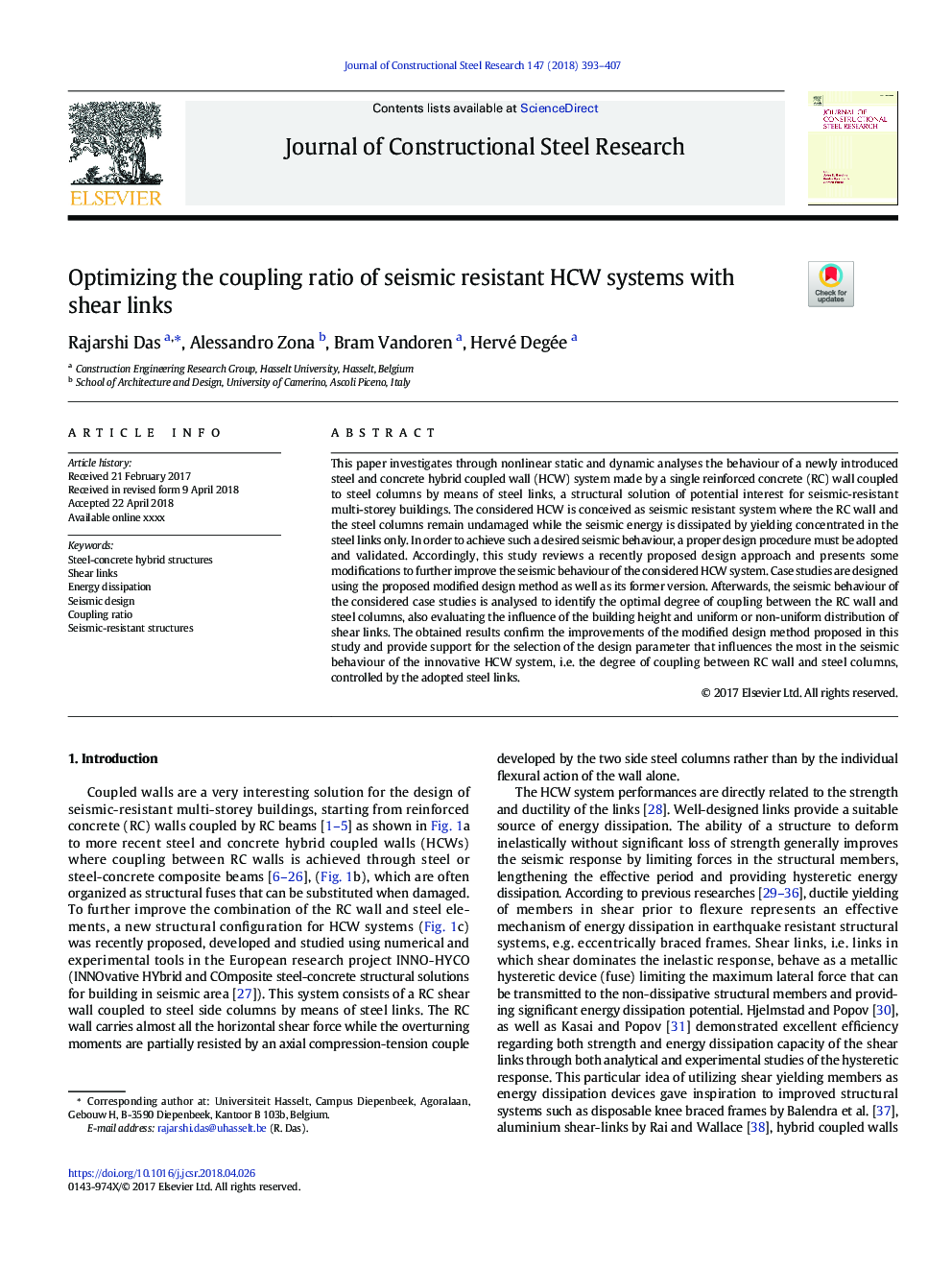| Article ID | Journal | Published Year | Pages | File Type |
|---|---|---|---|---|
| 6750522 | Journal of Constructional Steel Research | 2018 | 15 Pages |
Abstract
This paper investigates through nonlinear static and dynamic analyses the behaviour of a newly introduced steel and concrete hybrid coupled wall (HCW) system made by a single reinforced concrete (RC) wall coupled to steel columns by means of steel links, a structural solution of potential interest for seismic-resistant multi-storey buildings. The considered HCW is conceived as seismic resistant system where the RC wall and the steel columns remain undamaged while the seismic energy is dissipated by yielding concentrated in the steel links only. In order to achieve such a desired seismic behaviour, a proper design procedure must be adopted and validated. Accordingly, this study reviews a recently proposed design approach and presents some modifications to further improve the seismic behaviour of the considered HCW system. Case studies are designed using the proposed modified design method as well as its former version. Afterwards, the seismic behaviour of the considered case studies is analysed to identify the optimal degree of coupling between the RC wall and steel columns, also evaluating the influence of the building height and uniform or non-uniform distribution of shear links. The obtained results confirm the improvements of the modified design method proposed in this study and provide support for the selection of the design parameter that influences the most in the seismic behaviour of the innovative HCW system, i.e. the degree of coupling between RC wall and steel columns, controlled by the adopted steel links.
Related Topics
Physical Sciences and Engineering
Engineering
Civil and Structural Engineering
Authors
Rajarshi Das, Alessandro Zona, Bram Vandoren, Hervé Degée,
